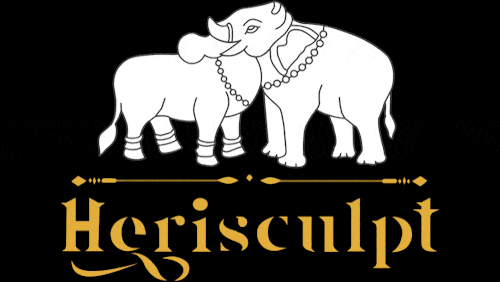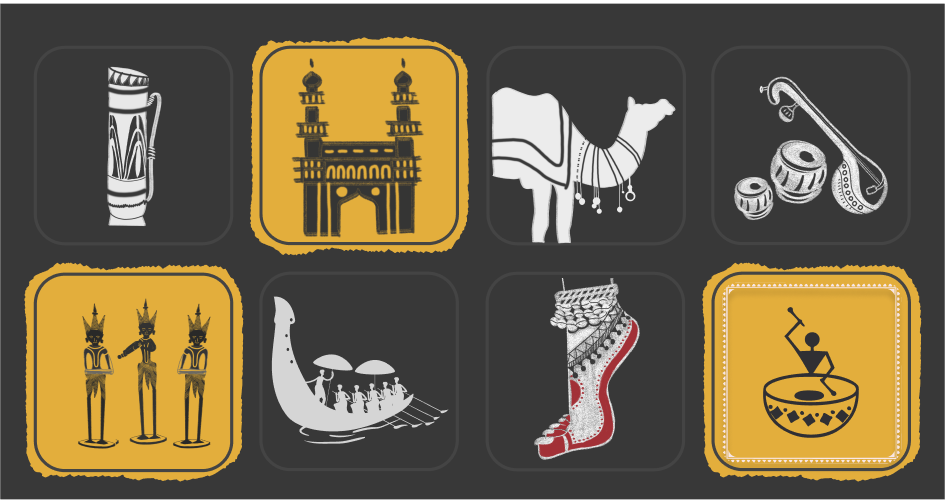Yoga Narasimha: The Meditative Form of the Divine Protector
Narasimha:
Narasimha, every so often known as Narasingha, is the fourth avatar of the Hindu god Vishnu. This precise incarnation, part-man, and component-lion became manifested to vanquish the demon king Hiranyakashipu, thereby ending spiritual persecution and restoring dharma on Earth.

Yoga Narasimha:
Yoga Narasimha, a respected form of the fourth avatar of Vishnu, embodies a unique synthesis of energy and serenity. While Narasimha is often depicted as the fierce deity who vanquishes the demon king Hiranyakashipu, his Yoga Narasimha aspect highlights a more introspective and tranquil aspect, emphasising meditation, internal peace, and self-discipline.
Iconography and Symbolism:
In his Yoga Narasimha form, Narasingh Dev is generally portrayed seated within the lotus function (Padmasana), a traditional yogic posture that signifies nonsecular enlightenment and stability. His lion-like face, which exudes raw electricity, contrasts with the calmness of his meditative posture, representing the harmonious combo of power and tranquillity. His eyes are often depicted as 1/2-closed or gently centred inward, symbolising deep awareness and the inward journey of self-realisation.
This shape is embellished with the everyday attributes of a yogi: a serene expression, mudras (hand gestures) symbolising peace and meditation, and every so often surrounded through an air of mystery of divine mild. This juxtaposition of the fierce and the nonviolent is relevant to the iconography of Yoga Narasimha, illustrating that real strength is tempered through internal calm and willpower.
Appearance and Pose of Yoga Narasimha:
Appearance and Pose:
Yoga Narasimha, an element of the fourth avatar of Lord Vishnu, combines the fierce attributes of the traditional Narasimha with a serene, meditative manner. Here’s an in-depth description of his appearance and pose:
Body and Posture: Yoga Narasimha is typically depicted seated within the lotus function (Padmasana), a pose symbolising meditation and non secular enlightenment. His higher frame is upright and composed, exuding tranquillity and control. This posture underscores the theme of internal peace and yogic attention.
Face and Expression: His face keeps the lion-like capabilities of Narasimha, with an outstanding mane, sharp eyes, and fierce expression. However, inside the Yoga Narasimha shape, those functions are softened to carry calmness and introspection. His eyes are regularly closed or lightly centred inward, symbolising deep meditation.
Hands and Mudras: The hands of Yoga Narasimha are generally placed in symbolic gestures or mudras. Common mudras encompass:
Dhyana Mudra: The gesture of meditation, wherein the arms rest on the lap with fingers facing upwards, one gives up the opposite, and thumbs touching.
Abhaya Mudra: The gesture of fearlessness and protection, wherein the proper hand is raised to shoulder peak with the palm dealing with outward.
Varada Mudra: The gesture of granting boons, wherein the left hand is prolonged downward with the palm open, facing outward.
Ornaments and Adornments:
Yoga Narasimhar is frequently richly embellished, signifying his divine nature and the combo of majesty and meditation:
Crown (Mukuta): He wears a resplendent crown, frequently adorned with problematic designs and jewels, symbolising his royal and divine fame.
Garlands and Necklaces: Multiple layers of necklaces and garlands enhance his neck. These are commonly products of gold and studded with valuable gemstones, highlighting his divine opulence.
Armlets and Bracelets: His palms are adorned with complex armlets (baseband) and bracelets, which are intricately designed and embellished with jewels.
Sacred Thread (Yajnopavita): A sacred thread is often visible draped across his chest, signifying his adherence to Vedic traditions and spiritual authority.
Ankle Bells (Nupura): His ankles are embellished with sensitive bells, including a musical detail to his divine presence.
Clothing: His apparel includes rich, flowing clothes, often depicted in vibrant colours together with purple, yellow, or saffron, which might be symbolic of divine energy and spirituality. The garments are decorated with golden borders and complex patterns.
Lotus Pedestal: Yoga Narasimha is often shown seated on a lotus pedestal, emphasising purity and divine beginning. The lotus is a symbol of non secular awakening and enlightenment, in addition to enhancing the meditative component of this form.
Spiritual Significance
Yoga Narasimha holds profound religious significance, emphasizing the significance of internal power and meditation. This form of Narasimha encourages devotees to look within themselves to discover peace and overcome their inner demons. It teaches that the direction to enlightenment and proper energy lies in mastering one’s very own thoughts and feelings via the practice of yoga and meditation.
As the God of Yoga, Yoga Narasimha guides practitioners on their nonsecular journey, helping them to stabilize their physical, mental, and spiritual energies. This form is especially respected for its capability to bestow inner peace, resilience, and spiritual clarity, making it a beloved deity for those in search of to deepen their yoga practice and nonsecular subject.
Explore our more collection in idol, Figurines, Artefacts, Monuments
Temples and Worship
Yoga Narasimha is worshipped in numerous temples throughout India, wherein his devotees are trying to find blessings for religious growth, inner peace, and electricity. The Parakala Matha in Mysuru is one of the distinguished centers committed to this form, reflecting its deep significance within the Sri Vaishnava tradition. Devotees regularly perform special rituals, meditations, and yoga practices in those temples, invoking the advantages of Yoga Narasimha for steerage and safety.
Cultural and Philosophical Impact
The depiction of Narasimha in a meditative yogic posture serves as an effective bridge between the philosophies of Vaishnavism and Yoga. It underscores the concept that divine intervention and personal religious practice are interconnected and that one’s internal religious journey is as vital as external actions. Yoga Narasimha inspires practitioners to domesticate a calm and targeted mind, reminding them that true electricity comes from within.
This form of Narasimha additionally emphasises the philosophical idea that all beings possess both fierce and nonviolent aspects. By balancing these dualities through yoga and meditation, individuals can gain harmony and enlightenment. Yoga Narasimha’s teachings encourage devotees to embody their internal power even as keeping serenity and balance in their lives.
Yoga Narasimha stands as a profound symbol of the combination of electricity and serenity. This shape of Narasimha reminds devotees that real energy and safety come from internal peace and self-mastery. Through the exercise of yoga and meditation, one can achieve nonsecular enlightenment and stability, guided by means of the tranquil yet powerful presence of Yoga Narasimha. His legacy continues to encourage and guide folks who seek to harmonize their physical, intellectual, and nonsecular energies, embodying the undying understanding of inner power and peace.
Festivals Celebrated for Lord Narasimha
Narasimha Jayanti
Description: Narasimha Jayanti is the maximum outstanding festival dedicated to Lord Narasimha, celebrating his look day. This festival falls on the 14th day of the intense 1/2 (Shukla Paksha) of the month of Vaishakha (April-May) in step with the Hindu calendar.
Rituals: Devotees observe fasting, perform unique prayers, and behavior difficult rituals in temples devoted to Narasimha. The day is marked by reciting hymns and scriptures related to Narasimha, inclusive of the Narasimha Kavacham, and conducting abhishekam (ritual bathing) of Narasimha idols.
Vaikuntha Ekadashi
Description: Although on the whole a festival devoted to Lord Vishnu, Vaikuntha Ekadashi is also widespread for worshipers of Lord Narasimha. It falls on the eleventh day of the waxing moon in the month of Margashirsha (December-January).
Rituals: Devotees fast and interact in numerous devotional sports, which include chanting and meditation. Special prayers and rituals are conducted in Narasimha temples, and plenty of devotees live conscious all night, making song hymns and collaborating in spiritual discourses.
Holi
Description: Known because of the competition of colors, Holi is likewise related to the legend of Prahlada and Hiranyakashipu. It commemorates the safety of Prahlada by way of Lord Narasimha and the burning of Holika, Hiranyakashipu’s sister.
Rituals: The pageant is well known for colorful shades, singing, dancing, and festive meals. On the eve of Holi, bonfires are lit to symbolize the victory of desirable over evil, mirroring the burning of Holika and the safety of Prahlada using Narasimha.
Narasimha Vratam
Description: This is a special fasting ritual found with the aid of devotees to search for the advantages of Lord Narasimha for protection and elimination of obstacles. It can be completed on any auspicious day, however frequently found on precise days related to Narasimha.
Rituals: Devotees study a strict fast, carry out difficult pujas, and recite the Narasimha Stotra and other associated hymns. The vratam is assumed to bestow prosperity, health, and protection from evil.
Explore our more collection in idol, Figurines, Artefacts, Monuments
Swati Nakshatra Celebrations
Description: The superstar Swati is considered auspicious for Lord Narasimha, and special prayers and rituals are carried out in temples on the day while the Swati Nakshatra is in prominence.
Rituals: Devotees go to Narasimha temples, carry out unique abhishekam, and provide prasad (sacred meals). Many devotees adopt fasting and interact in chanting the Narasimha mantra.
Festivals devoted to Lord Narasimha mirror the profound reverence and devotion his fans have for this powerful avatar of Vishnu. Through these celebrations, devotees commemorate his divine intervention in shielding his devotees, upholding dharma, and vanquishing evil. Each festival is marked via vibrant rituals, fasting, prayers, and a deep feeling of religious connection with Lord Narasimha.
Yoga Narasimha, the meditative form of Lord Vishnu's fourth avatar, epitomizes the perfect stability of power and serenity. This specific depiction of Lord Narasimha highlights the union of fierce protecting strength and deep spiritual calmness, coaching that actual divinity encompasses each the would possibly to protect and the knowledge of internal peace. Worshipping Yoga Narasimha conjures up devotees to are seeking for protection and steering, fostering a life wherein courage and calmness coexist harmoniously. The yoga narasimha statue serves as a profound reminder of this balance, encouraging the pursuit of spiritual enlightenment and the cultivation of inner harmony amidst life's challenges.


